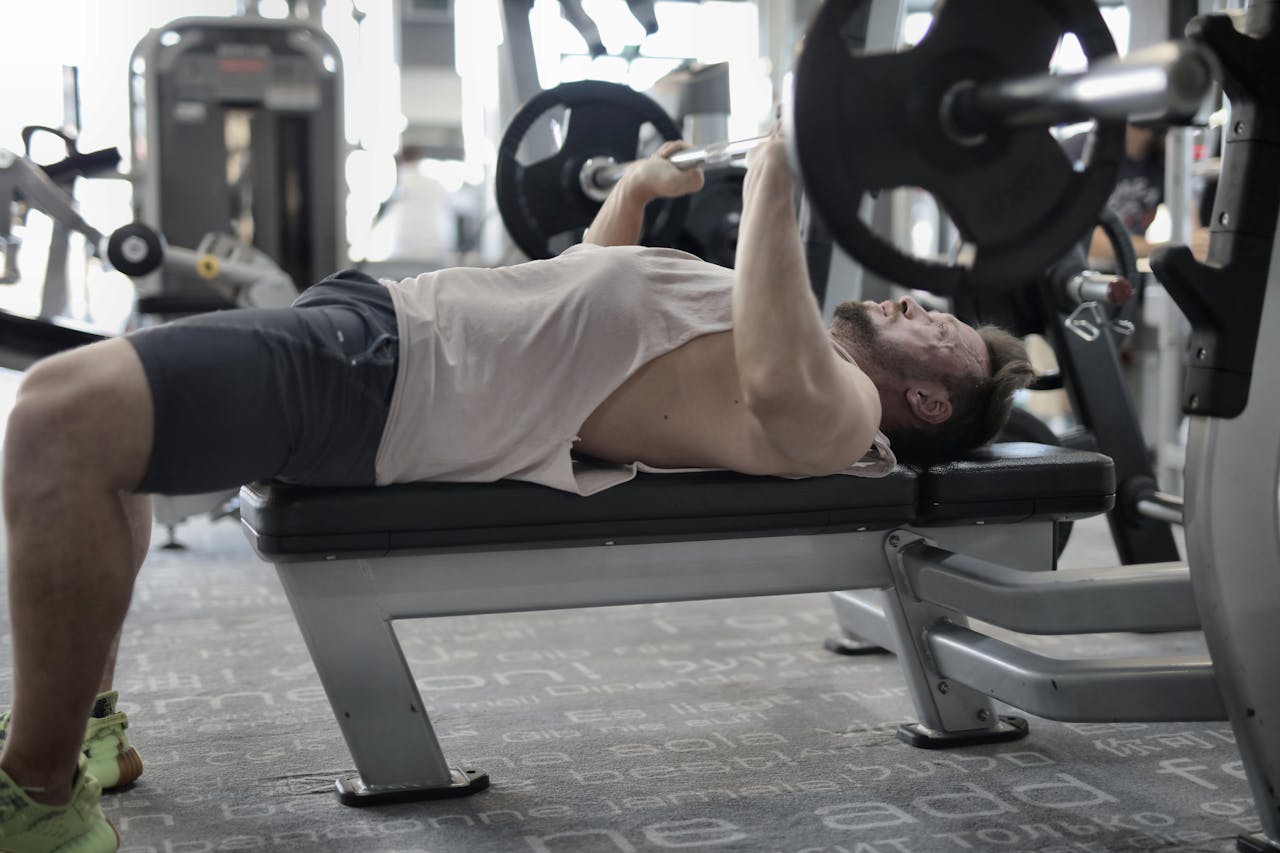
In the realm of strength training, three exercises stand as the cornerstone of building raw power, muscle, and overall fitness: the deadlift, squat, and bench press. Each exercise targets key muscle groups, promoting not just muscle growth but also enhancing functional strength that benefits daily activities. This guide takes you from the basics to more advanced techniques, ensuring that whether you’re a beginner or an aspiring powerlifter, you understand how to perform these exercises with correct form and efficiency.
The Deadlift: Lifting the World
The deadlift is a powerhouse move that engages the entire posterior chain, including your glutes, hamstrings, lower back, and traps.
Step-by-Step Guide:
- Starting Position: Stand with your feet hip-width apart, with the barbell centered over your feet. Your feet should be pointing slightly outwards.
- Grip: Bend at your hips and knees, and grab the barbell with both hands. You can choose between a double overhand grip or a mixed grip (one hand over, one hand under) for better grip strength.
- Lift Off: Keep your back straight, chest up, and shoulders slightly in front of the bar. Pull the slack out of the bar by slightly lifting it without removing the plates from the ground. This ensures tension in your muscles before the actual lift.
- Execution: Drive through your heels, extending your knees and hips simultaneously to lift the bar. Keep the bar close to your body throughout the lift. Once the bar passes your knees, push your hips forward to stand up straight.
- The Descent: Lower the bar by bending at the hips and then the knees, keeping the bar close to your body, until it touches the ground.
Tips for Progression:
- Beginners: Focus on form with lighter weights. Practicing with a PVC pipe or an empty barbell can help you understand the movement.
- Intermediate: Once your form is solid, gradually increase the weight to build strength. Consider incorporating variations like the Romanian deadlift for hamstring development.
- Advanced/Powerlifters: Implement accessory exercises to overcome weaknesses. Deficit deadlifts, block pulls, and targeted hamstring and lower back strengthening exercises can enhance your deadlift performance.
The Squat: The King of Exercises
Squats work the quadriceps, hamstrings, glutes, lower back, and core, making them an essential exercise for lower body strength.
Step-by-Step Guide:
- Starting Position: Stand with your feet slightly wider than hip-width apart, toes pointed slightly out. The barbell should rest on your upper back (for high bar squats) or just below the traps (for low bar squats).
- Descent: Initiate the squat by sitting back and down, bending at the hips and knees simultaneously. Keep your chest up and your spine in a neutral position.
- Depth: Aim to lower yourself until your hips are below your knees (hip crease below the top of the knee), ensuring a full range of motion.
- Ascent: Drive through your heels, pushing the floor away to return to the starting position, keeping the barbell path straight.
Tips for Progression:
- Beginners: Start with bodyweight squats or goblet squats to build the mobility and strength necessary for barbell squats.
- Intermediate: Add weight progressively and focus on depth and form. Experiment with different stances and bar positions to find what suits you best.
- Advanced/Powerlifters: Incorporate squat variations, such as front squats and paused squats, and focus on weak points in your lift. Squatting with chains or bands can also add variety and challenge.
The Bench Press: Building Upper Body Might
The bench press is a fundamental exercise for developing upper body strength, targeting the chest, shoulders, and triceps.
Step-by-Step Guide:
- Starting Position: Lie on the bench with your eyes under the bar. Plant your feet firmly on the ground, and create a slight arch in your lower back. Grip the bar slightly wider than shoulder-width.
- Unrack: With the help of a spotter, lift the bar off the rack, positioning it directly above your chest with your arms straight.
- Descent: Lower the bar to your chest in a controlled manner, tucking your elbows slightly to protect your shoulders.
- Press: Drive the bar back up to the starting position, pushing through your feet and using your chest and triceps.
Tips for Progression:
- Beginners: Focus on technique with light weights. Practice the motion with an empty barbell or dumbbells to build stability and strength.
- Intermediate: Gradually increase the weight while maintaining form. Introduce variations like incline and decline bench presses to target different parts of the chest.
- Advanced/Powerlifters: Implement accessory exercises such as tricep extensions, shoulder presses, and chest flies to address weaknesses. Experiment with board presses and bench press with chains or bands for advanced strength development.
Conclusion
Mastering the deadlift, squat, and bench press is a journey of continuous improvement, requiring patience, dedication, and attention to form. By starting with the basics, progressively challenging yourself, and focusing on technique, you can build a solid foundation of strength that will serve you in both everyday life and competitive arenas. Remember, the key to success in these lifts is not just the weight on the bar but the precision with which you execute each movement. Train smart, stay consistent, and the gains will follow.



